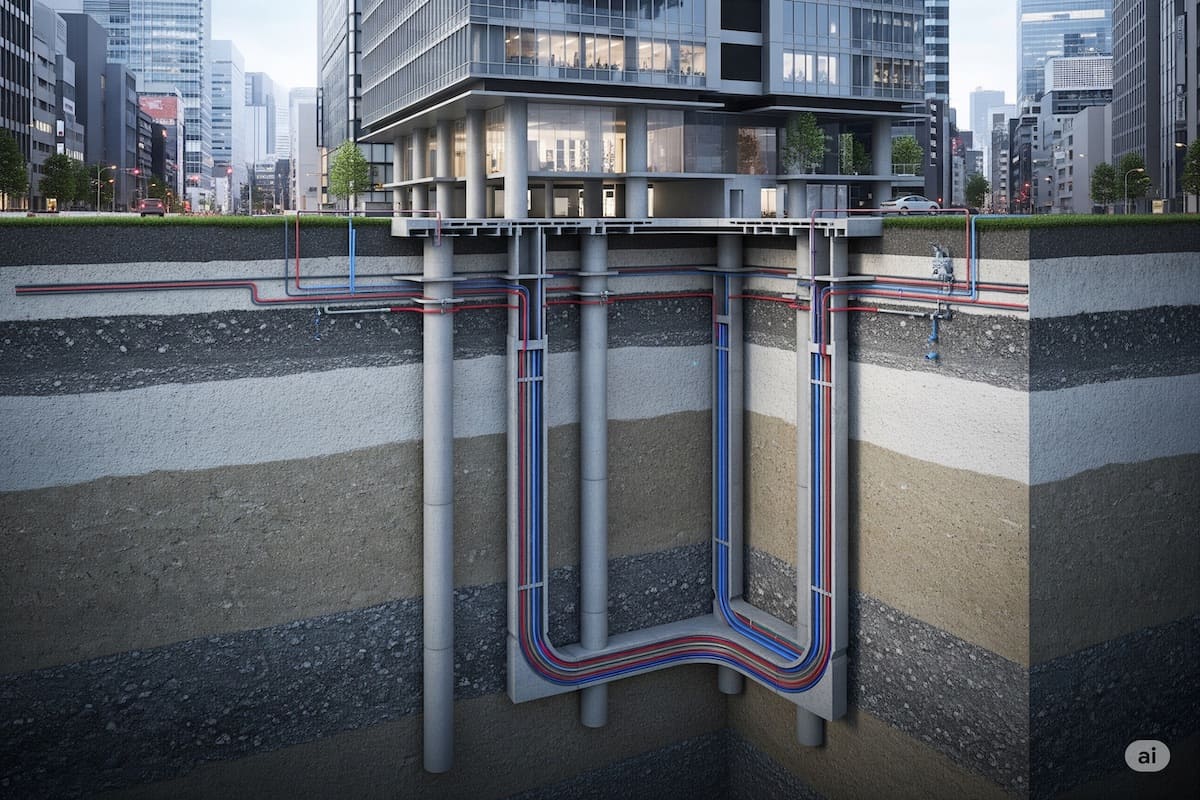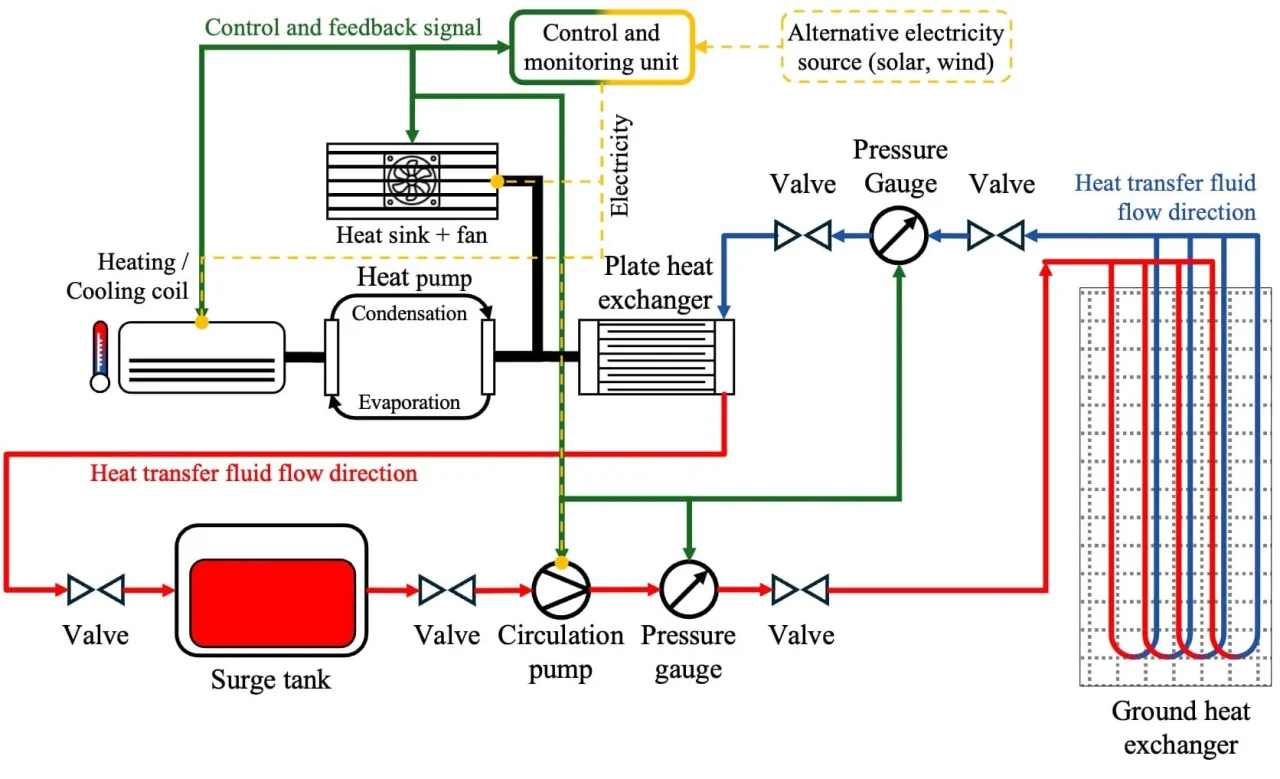
Tackling the challenge of thermal interference
Despite its vast potential, geothermal energy accounts for less than 3% of the European Union’s energy production. As a low-carbon and non-intermittent source, geothermal energy could significantly contribute to both heating and cooling buildings. However, the urgency of climate change demands energy efficiency upgrades starting from the most urbanized environments, precisely where the ground is often heterogeneous and can hinder heat transfer performance. In these cases, whether using geothermal probes or energy piles, results may vary, pushing designers toward alternative energy options.
An innovative study from Japan’s Shibaura Institute of Technology could change that. It proposes a method to optimize geothermal energy in urban areas with low-conductivity clay soils, such as Tokyo, Bangkok, or Manila.
Integrating geothermal into foundations: how energy piles work

Led by Professor Shinya Inazumi from the Faculty of Engineering at the Shibaura Institute of Technology, the Japanese research team developed a 3D heat transfer model based on real-world data collected in Bangkok. The goal: to improve the efficiency of energy piles even in challenging geological conditions.
Energy piles are reinforced concrete elements that serve both structural and thermal functions. Inside the pile, U-shaped pipes circulate a heat-transfer fluid that exchanges thermal energy with the surrounding soil, using the ground’s stable temperature. Connected to ground source heat pumps (GSHP), these systems offer higher efficiency for heating and cooling than traditional air-to-air systems, even in extreme climates.
The challenge of clay soils
Yet, energy piles face performance limitations in soils with low thermal conductivity, like clay. In such conditions, a phenomenon known as “thermal interference” can occur, where heat builds up in the soil and reduces system efficiency. According to the Japanese study, soil temperatures around energy pile clusters can rise by 2.18% to 15.43%, depending on pile density and daily operating cycles (ranging from 8 to 24 hours), ultimately affecting long-term performance. However, with the help of the newly developed predictive model, engineers can now forecast and mitigate these issues from the early design stages.
A software model that predicts problems and proposes solutions
Using COMSOL Multiphysics software, researchers ran simulations to analyze the thermal behavior of energy pile groups under real-world conditions. Their work yielded a set of practical multiplier factors, allowing designers to scale up thermal predictions to larger pile clusters without building complex 3D models, thus cutting computational costs and making the technology more accessible for low-budget urban projects.
For instance, the study found that reducing daily operating hours can delay thermal saturation in the soil by over 100 hours and lower peak ground temperatures by up to 29% over five years. The team also confirmed a phenomenon dubbed “thermal crowding,” where central piles accumulate more heat than peripheral ones, suggesting that spatial reconfiguration can optimize performance.
Toward resilient and low-emission buildings
These findings support smarter building design with lower emissions and promote the use of alternative heating and cooling systems in high-energy-demand, climate-vulnerable areas.
“Our study demonstrates the feasibility and cost-effectiveness of geothermal energy systems in dense urban settings and addresses key challenges in regional development, contributing to the global climate agenda,” concluded Professor Inazumi.
The study was published in Case Studies in Thermal Engineering in September 2025.